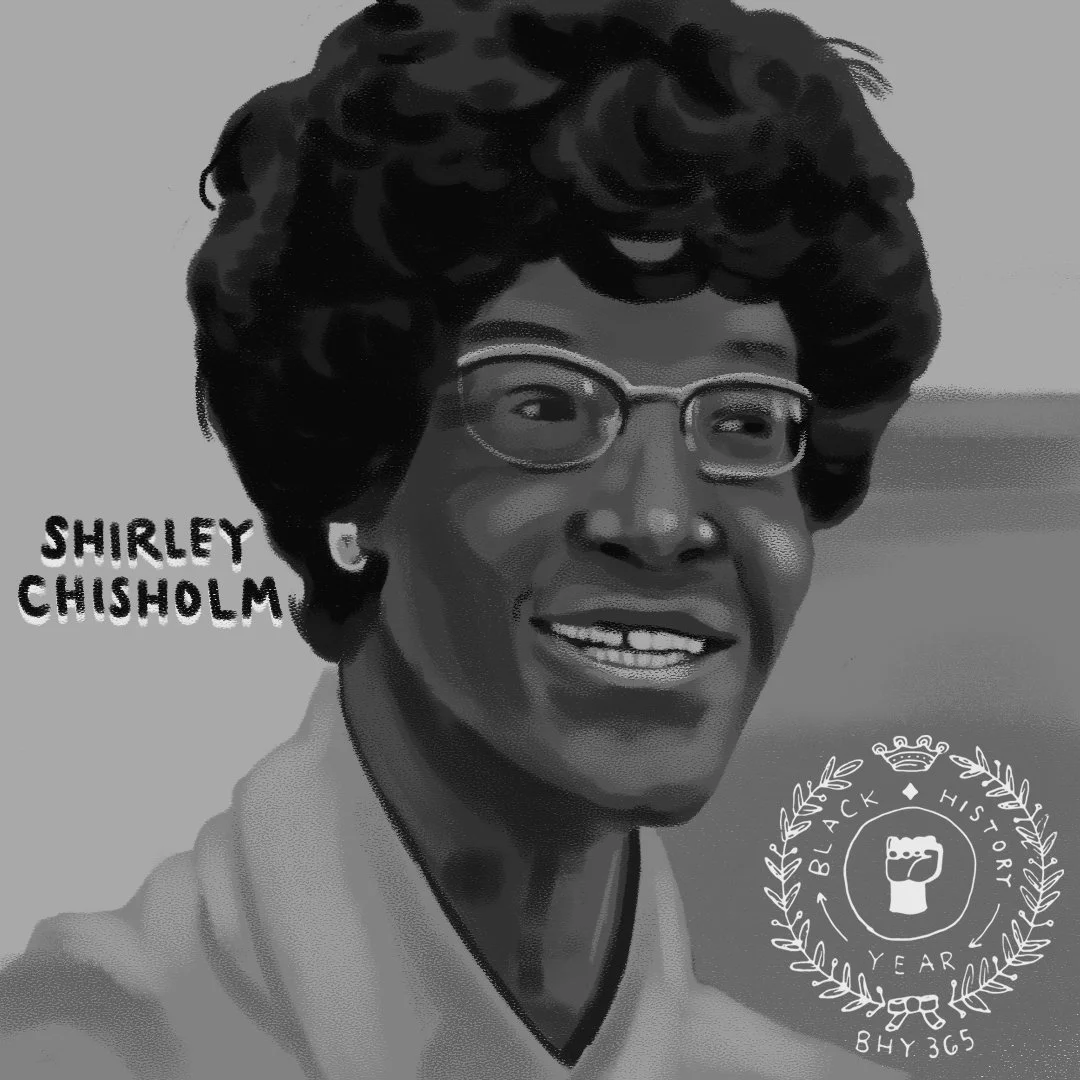Did you know the ap the appetizer Hushpuppies come from enslaved Africans? Yes. They were fried balls of cornmeal and were thrown out to distract the hounds from tracking them. It worked. They’ve been called Hush Puppies ever since. A chef & historian interviewed by Harvard magazine denies this as a popular fable, assuming that slaves would not have time to cook & that the onions in the recipe are obnoxious and noisome. This denial of the origin story does not take into account the fact that the recipe could’ve have changed depending on the situation that called to it. Whether you to choose to believe the widespread documented history or the griots of communities across the diaspora is up to you, the reader.
Black History 365 | # 78 The Divide Between Haiti & Dominican Republic Pt. 2
Under the lens of colonialism most (to all) peoples, places, and things in existence need to be identified, categorized, named, separated, and more times than not, exploited. The macrocosm that is colonization, which is the act of taking control of an area or country that is not your own, by force can be compared to the microcosm that is a slave master. The main premise of both are to have power at the expense of the autonomy of a person or persons. The main goals of both are exponential gain. Examples being, gaining natural resources, free or cheap labor, or both. The driving force for both are an untamed and almost feral-like greed, unfortunately. Countries that take part in colonizing do not do so in a vacuum, meaning these countries are affected by one another, they have history, communications, shared interests, individual interests, collaborative efforts, short-term & long-term plans and goals, they have disagreements, even wars, even treaties. They do not work in a vacuum. Much like slave masters do not work in a vacuum. They have auctions, dinners, picnics, entertainment (e.g having their strongest slaves bare knuckle fight one another or gatherings for lynchings), they exchanged information, had common goals, worked collectively to circulate power amongst each other, developed rules & regulations to retain that power - some private some public (e.g Jim Crow laws vs Redlining practices), and caste systems to give the illusion of a hierarchy within a group of people to further conquer by division based on complexion. Slave masters amongst each other in a country like colonization among countries does not happen in a vacuum.
To better understand Haiti & Dominican Republic’s divide we must first get familiar with the so-called master’s who once held (arguably still holds) dominion over them. Spanish-Europeans conquered the whole island of Hispaniola in 1493 but receded to the eastern part (Modern day Dominican Republic) in 1795, giving the western part (Modern day Haiti) to France. Although it’s not quite that simple. Because the residual effect of a successful run of conquering countries, empires, and/or people is the so-called victors control what history gets saved and documented & what history gets destroyed and discarded. Common sense is a must when filling in the gaps of destroyed, hidden, and/or rewritten history. Roughly from 3000 BC to 500 BC is thought to represent the earliest migration of Arawak Indians from South America (Columbia, Venezuela, Guyana, Suriname, French Guiana, Brazil, Uruguay, Argentina, the Falkland Islands, Chile, Peru, Ecuador, Bolivia, & Paraguay) to the Lesser Antilles & finally reaching the Greater Antilles. (Lesser Antilles - Barbados, Dominica, Grenada, Martinique, Anguilla, Antigua & Barbuda, British Virgin Islands, Guadeloupe, Montserrat, Saba, Saint Kitts & Nevis, Saint Martin, Saint Barthélemy, Saint Eustatius, Saint Maarten, & US Virgin Islands) The Greater Antilles being Caymen Islands, Cuba, Dominican Republic, Haiti, Jamaica, & Puerto Rico. Hispaniola was made up 5 different kingdoms or caciques before Spain arrived, and then eventually France. Those Kingdoms were Marien, Magus, Maguana, Jaragua, & Higuey. The right to Chiefdom was achieved through female (the mother) bloodline, matrilineal succession. Within these Kingdoms there were at least 8 different ethnic groups & 2 different races – these ethnic groups were the Guanahatebay, the Macorix, the Ciguayo, the Ciboney, the Kalipuna, the Karina Caribs, the Lucayan Taino, & the so-called classic Taino (which all might be a product of European categorization, we cannot be too vigilant). The 2 races were a differing mix of Indigenous American-Indian ancestry and African ancestry. (Trinis & Tobagonians have a third trace of South-Asian ancestry.) But even under the umbrella term of Taino or Carib (there are fuzzy etymology paths tracing the root word carib to cannibal in Christopher Columbus’ writing, in short Carib-bean may be somewhat of a slur Columbus used on Taino people he particularly despised after actually witnessing other or same “race” of Taino who ate people either in war, starvation, or ritualistic sacrifice) these indigenous Arawakan people that inhabited the island of Hispaniola were already genetically diverse, with a wide range of phenotypes. When the European Spanish & French made their way to the island effectively wiping out 7 million Taino, essentially discontinuing the original culture of the Taino on the island the effect is now the people are of indigenous American-Indian ancestry, Indigineous-African ancestry, European ancestry & African-ancestry (transatlantic slave trade). Indigineous-African ancestry was already there. These indigenous people were mixed to begin with. And when Spain receded to the eastern-part of the island (Dominican Republic) among the 32,000 Taino that are documented as surviving in 1514, common sense is extremely important to use here - Spain would not have worked in a vacuum taking all its slaves to DR, leaving France with none to start. Especially with a (somewhat) newfound alliance through certain treatise happening during these countries separate then collaborative invasion of the island.
Modern day groups who most notably currently identify as a descendant of Taino heritage are Puerto Ricans, Cubans, Dominicans, & Jamaicans. Multiple sources do not include Haitians in that group, unfortunately, however, that doesn’t change what common sense will tell you. The island’s history is intertwined with more than 28 African tribes who were brought to Santo Domingo as slaves. In addition to the erasure of the indigenous Africans that were there before Spain’s arrival, the African’s brought there through slavery share a traumatic overlapping of legacies connecting them as kindred in history forever. Haiti & DR are one, even though they are not. There is an imaginary divide on the island. Recent research revealed a high percentage of mixed or tri-racial ancestry in Puerto Rico and the Dominican Republic. Those claiming Taíno ancestry also have African ancestry (whether they choose to acknowledge it based on centuries of mental conditioning or not), European-Spanish ancestry and often, both. But we are in quite deep, a familial connection across the island as a whole is not recognized in modern day. But this is by design due to colonialism, and has been centuries in the making.
Black History 365 | # 84 Martin Luther King Jr.
Did you know Martin Luther King Jr regretted his “I Have A Dream” speech? Reflecting upon it he feared he was integrating his people into a burning house. He felt that America was not being true to what America’s founding father’s wrote on paper. His perspective started to change, he started to see riots as necessary and as durable social phenomena. He spoke less about “dreams” and more about action. He spoke to and supported sanitation workers that were on strike and spoke about boycotting Coca Cola and other businesses. He spoke about sticking together and never stopping until actionable change was made. He spoke of Egyptian history, Greek, and Roman history. He was still non-violent, but there was clearly a shift in his energy. He was assassinated within 24 hours of making his last speech.
Black History 365 | # 83 Shirley Chisholm
Black History 365 | # 82 The Kemetic (Egyptian) Peace Sign
The origin of splitting your index and middle finger while throwing up the “peace” sign is actually the hand signal used by allied nations during World War II. It’s a V, for victory. Victor de Laveleye, a Belgian refugee working for the BBC, shortwaved the following announcement to his countrymen: "I am proposing to you as a rallying emblem the letter V…” Although anti-war activists later adopted it as a symbol of peace the Kemetic aka Egyptian peace sign meant oneness. And your index and middle fingers are to be brought together. Makes sense. Pretty cool stuff. Peace.





